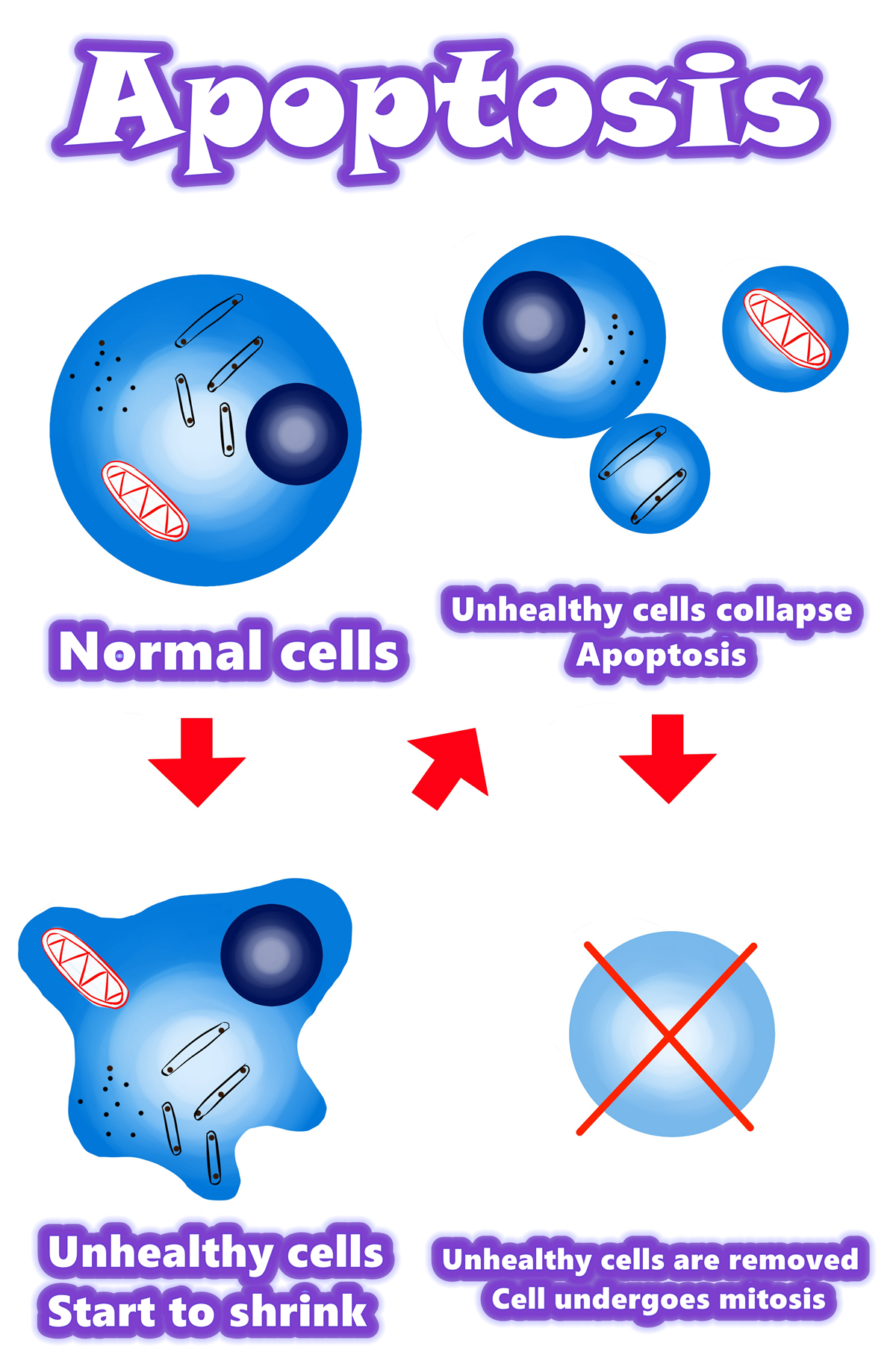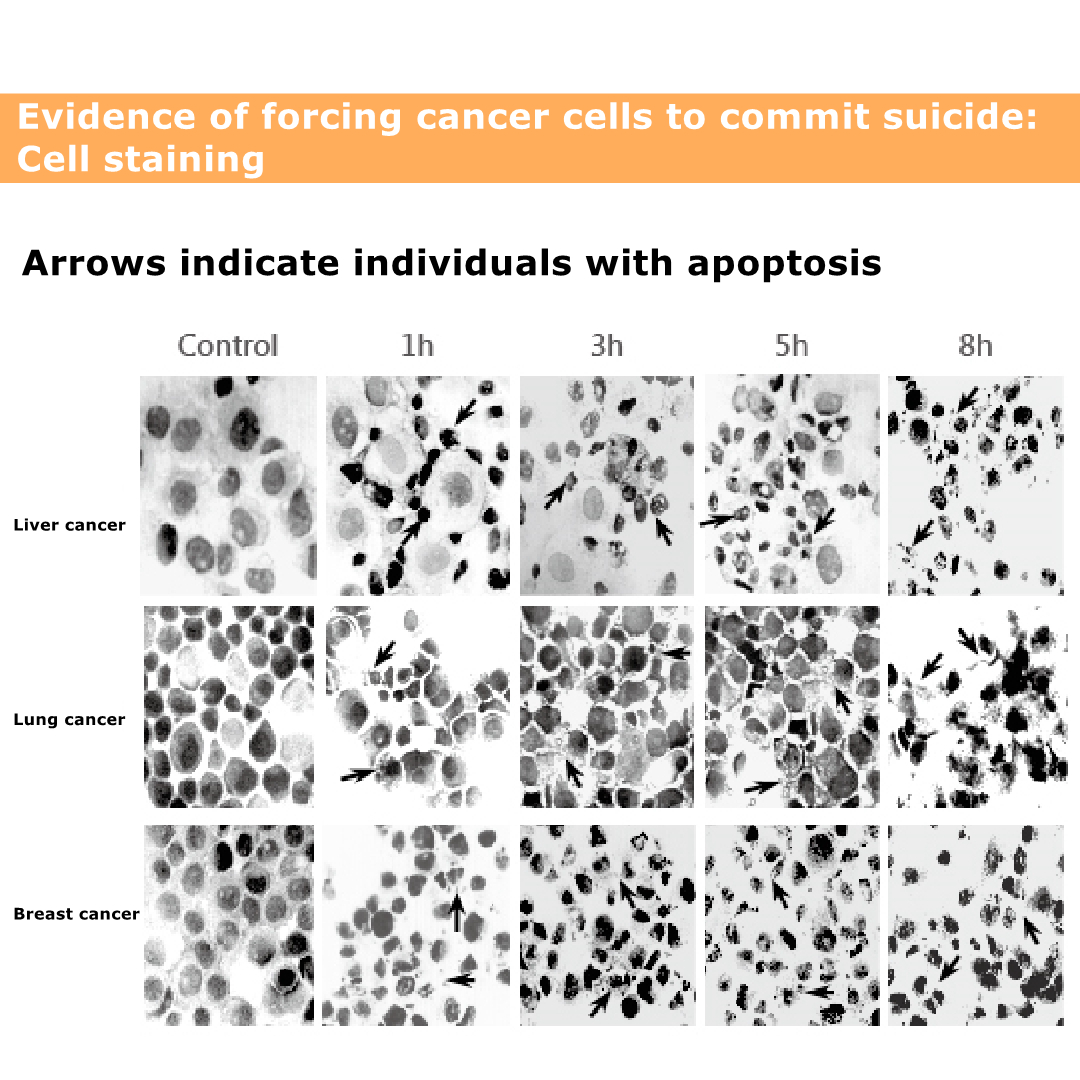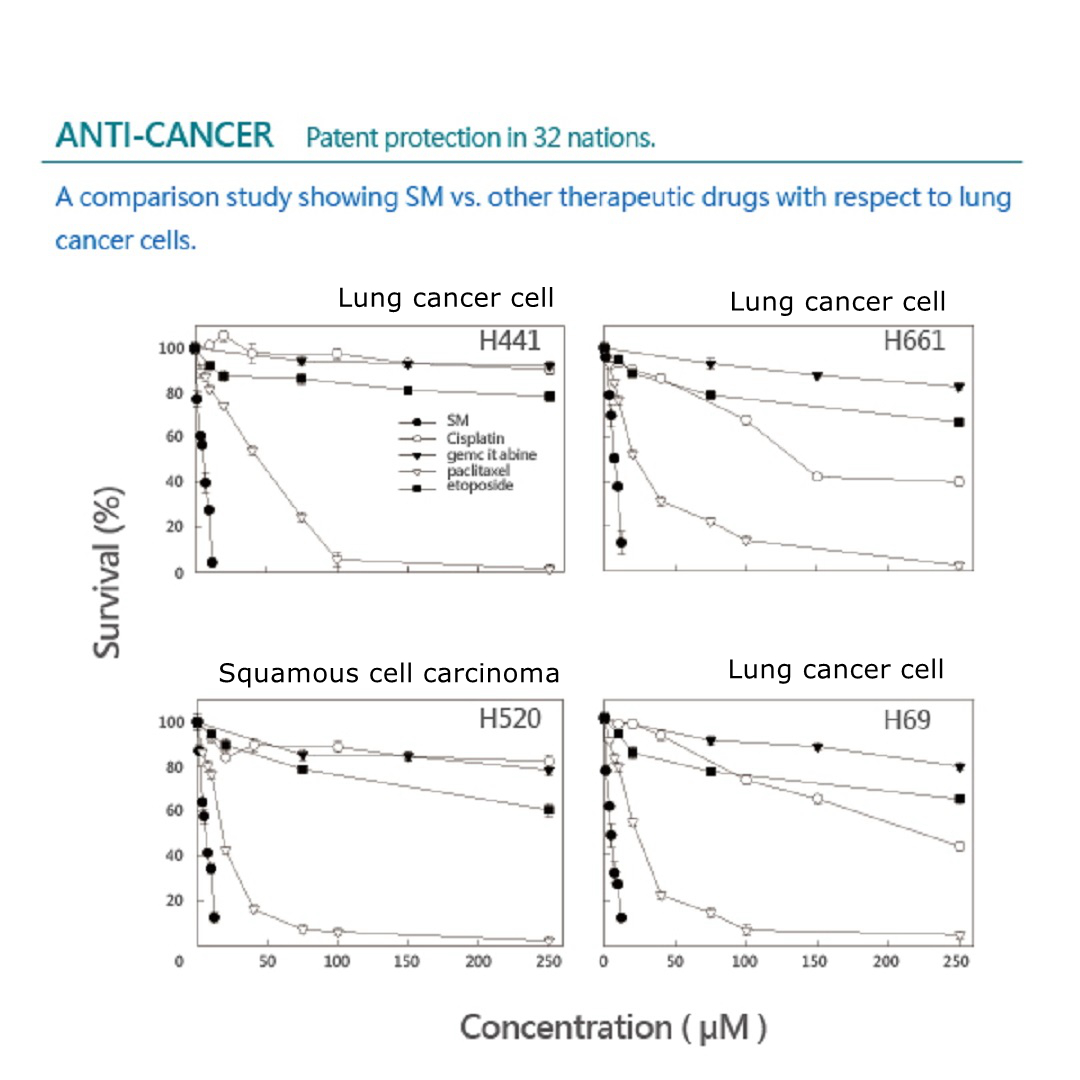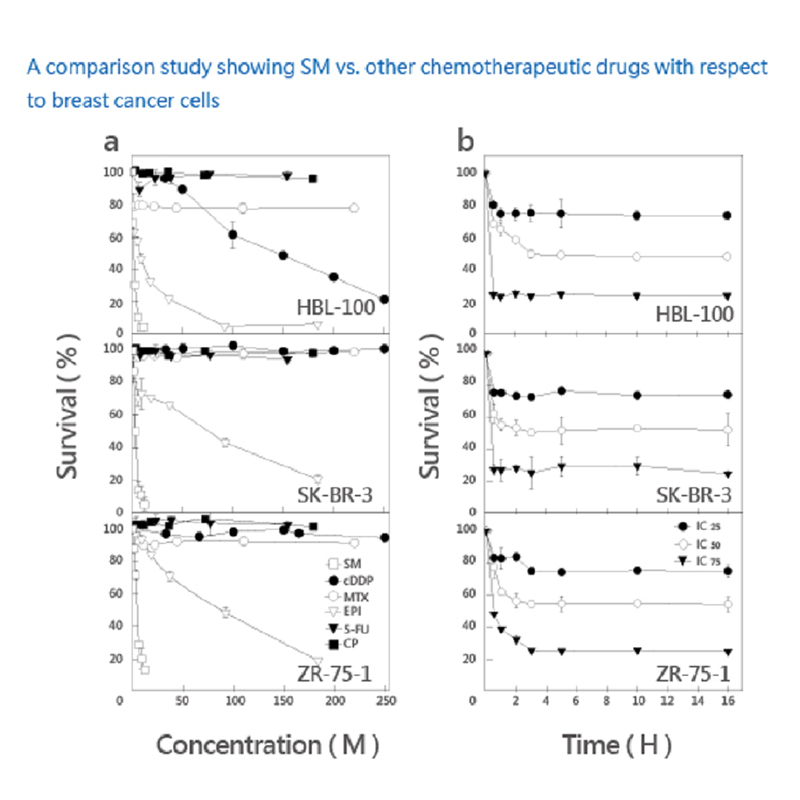
Best adjuvant (assist) for chemotherapy | 1+1>487% |
Effectively improve chemotherapy effect, treatment, immunity.
Reduce side effects and recurrence.
Overview / Relation / Abstract / Role / Principle / Action / Mechanism / Function / Work |
Osteosarcoma - Childhood and Adolescence: Latest Research
Abstract / Summary / Overview of Apoptosis.
Why do cells undergo apoptosis?
The relationship between cancer cells and apoptosis.
Where are the weaknesses and symptoms of cancer cells?
Are cancer cells aggressive?
Extraordinary Solamargine (Role, Principle, Action, Mechanism, Function, Work)
Solamargine's major function mechanism:
Solamargine vs cancer
Best Chemotherapy Adjuvant. (1+1>478%)
Effectively improve chemotherapy effect and cure.
When cancer cells are less resistant to drugs, chemotherapy becomes more effective.
Extract : https://www.cancer.net/cancer-types/
Osteosarcoma - Childhood and Adolescence: Latest Research
You will read about the scientific research being done to learn more about osteosarcoma and how to treat it.
Doctors are working to learn more about osteosarcoma, how to best treat it, and how to provide the best care to children and teens diagnosed with this disease. The following areas of research may include new options for people with osteosarcoma through clinical trials. Always talk with your child’s doctor about the best diagnostic and treatment options for your child.
Improved treatment. In several studies, researchers are looking at adding different drugs to standard treatment that may improve the treatment’s success without increasing the side effects, such as:
One drug that was tested is the immunotherapy drug called mifamurtide (Mepact). Immunotherapy, also called biologic therapy, is designed to boost the body's natural defenses to fight the cancer. Mifamurtide is currently licensed in Europe by the European Medicines Association for the treatment of localized osteosarcoma that can be removed with surgery. However, it has not been approved by the U.S. Food and Drug Administration (FDA) in the United States. Other approaches on how best to stimulate the patient's own immune system are in various stages of research.
As part of the Children’s Oncology Group AOST 0331 study, pegylated interferon alpha (multiple brand names) was added to treatment after 8 months of standard chemotherapy. This study was done with people who have localized osteosarcoma or metastases to the lungs or bones that can be surgically removed and whose tumor was almost completely eliminated by the first 10 weeks of chemotherapy treatment. The results of this study showed that adding pegylated interferon alpha did not benefit these people.
In the same study (AOST 0331), etoposide (Toposar, VePesid) and ifosfamide (Ifex) were added to standard chemotherapy treatment for a total of 10 months of treatment instead of the standard 8 months. This study was done with people when the osteosarcoma was not completely eliminated by the first 10 weeks of chemotherapy. According to the results of this study, adding these drugs after surgery caused more side effects and did not improve the outcome of treatment. Therefore, the more intensive chemotherapy approach is not recommended.
The Children’s Oncology Group and most of the world's experts consider this combination to be standard treatment: cisplatin (Platinol), doxorubicin (Adriamycin), and high-dose methotrexate (multiple brand names). Selected other combination therapies are similarly effective, but none has been proven better.
A study of people with metastatic osteosarcoma has also been completed. The study added a bone-stabilizing drug called zoledronic acid (Zometa) to standard chemotherapy. It showed that this combination of treatments did not increase general side effects, which was the goal of the study. A French group studied whether the addition of zoledronic acid to chemotherapy for newly diagnosed people with osteosarcoma would improve the outcome of treatment. Half of the people received a standard chemotherapy treatment and surgery. The other half received zoledronic acid in addition to the standard treatment. The group that received zoledronic acid did not have additional improvements.
A large number of clinical trials involve people with recurrent osteosarcoma. These studies include people who have had cancer come back once or more than once; people who have had a local or distant recurrence; and people whose cancer recurrence is located in the lungs, other bones, or both. A few of these clinical trials have found drugs that may work for osteosarcoma and are likely to be studied further. If your child's cancer has come back, talk about the results of these studies with your child's health care team.
Palliative care/supportive care. Clinical trials are underway to find better ways of reducing symptoms and side effects of current osteosarcoma treatments to improve comfort and quality of life for patients.
For information about these and other studies, visit the Children’s Oncology Group website or the U.S. National Institutes of Health website.
Talk with your child’s doctor for more information about clinical trials. They can provide additional details about the availability of the diagnostic tests, treatments, or other aspects of care that are being studied. Also, your doctor can provide details on whether they are appropriate for your child.
Abstract / Summary / Overview of Apoptosis.

Overview of apoptosis
•Programmed cell death
•Apoptosis is a form of programmed cell death, or “cellular suicide.”
•Apoptosis is different from necrosis, in which cells die due to injury.
•Apoptosis removes cells during development, eliminates potentially cancerous and virus-infected cells, and maintains balance in the body.
Why do cells undergo apoptosis?
- Basically, apoptosis is a general and convenient way to remove cells that should no longer be part of the organism.
- Some cells are abnormal and could hurt the rest of the organism if they survive, such as cells with viral infections or DNA damage.
- Apoptosis is part of development
- In many organisms, programmed cell death is a normal part of development.
The relationship between cancer cells and apoptosis
Apoptosis can eliminate infected or cancerous cells.
When a cell’s DNA is damaged, it will typically detect the damage and try to repair it.
If the damage is beyond repair, the cell will normally send itself into apoptosis, ensuring that it will not pass on its damaged DNA.
When cells have DNA damage but fail to undergo apoptosis, they may be on the road to cancer.
However, “successful” cancer cells successfully evade the process of apoptosis.
This allows them to divide out of control and accumulate mutations (changes in their DNA).
Apoptosis is key to immune function
Apoptosis also plays an essential role in the development and maintenance of a healthy immune system.
Where are the weaknesses and symptoms of cancer cells?
The symptoms of cancer cells are in the nucleus.
The nucleus controls the outer cytoplasm, cell composition, cell viability, etc.
DNA mutations also mutate in the nucleus.
Therefore, to treat cancer cells, we must first enter the nucleus.
Let the “regulatory cell gene” mechanism enter the nucleus to regulate
Are cancer cells aggressive?
After the action of Solamargine, the aggressiveness of cancer cells is alleviated.
So after using Solamargine, many patients feel that I am half better.
Although the tumor does not disappear quickly, patients feel that the degree of aggressiveness is reduced.
Extraordinary Solamargine (Role, Principle, Action, Mechanism, Function, Work).

Solamargine's major function mechanism:
When Solamargine enter,
Solamargine activates receptors that are turned off by cancer cells, allowing cancer cells to modulate again.
Solamargine modulates the anti-modulates genes of cancer cells, making cancer cells less resistant.
Reduced drug resistance
When cancer cells are less resistant to drugs, chemotherapy becomes more effective.
Solamargine modulates the mutated genes in cancer cells and then initiates cancer cell apoptosis to achieve anti-cancer effects.
Solamargine combined with which chemotherapy drugs are more effective in treating cancer cells?

Solamargine vs cancer

Solamargine vs cancer
The picture shows the death of cancer cells.
The black and black parts are cancer cell nuclei.
Even if the nucleus ruptures, the cancer cells will die.
The figure shows that cancer cells can cause death.

The figure shows that cancer cells can cause death.
The figure shows that the death of lung cancer cells is relatively slow, and it will not be obvious until eight hours later.
The figure shows that the death of liver cancer cells is very obvious, even more obvious in eight hours.
The graph shows that breast cancer cells die faster. It was obvious from the beginning that breast cancer is easy to treat, and patients with breast cancer need not worry.
Best Chemotherapy Adjuvant. (1+1>487%)
Effectively improve chemotherapy effect and treatment.
ANTI-CANCER
Patent protection in 32 nations.
A comparison study showing Solamargine vs. other therapeutic drugs with respect to lung cancer cells.
 A comparison study showing Solamargine vs. other chemotherapeutic drugs with respect to breast cancer cells.
A comparison study showing Solamargine vs. other chemotherapeutic drugs with respect to breast cancer cells.

SR-T100 combination therapy with effective result against breast cancer cells.

Combination Therapy | Research results for lung cancer cells.
A. Chemotherapy (100μM), 16% of cancer cell apoptosis.
B. Alone SM (4.8μM), 28% of cancer cell apoptosis.
C. SM (4.80μM) + Chemotherapy (40μM), 66% of cancer cells apoptosis.
D. SM (4.80μM) + Chemotherapy (100μM), 78% of cancer cell apoptosis.
SM has a clearing effect better than Chemotherapy.
The combined treatment of Solamargine and Chemotherapy significantly increased the apoptosis of lung cancer cells.
SM (4.8μM) + Chemotherapy (40μM), increased from 16% to 66% (up to 4.125 times).
SM (4.8μM) + Chemotherapy (100μM), increased from 16% to 78% (up to 4.875 times).
Reorganized from: BBRC. Action of Solamargine on TNFs and drug-resistant human lung cancer cells 2004.
The best solution for cancer cells.
